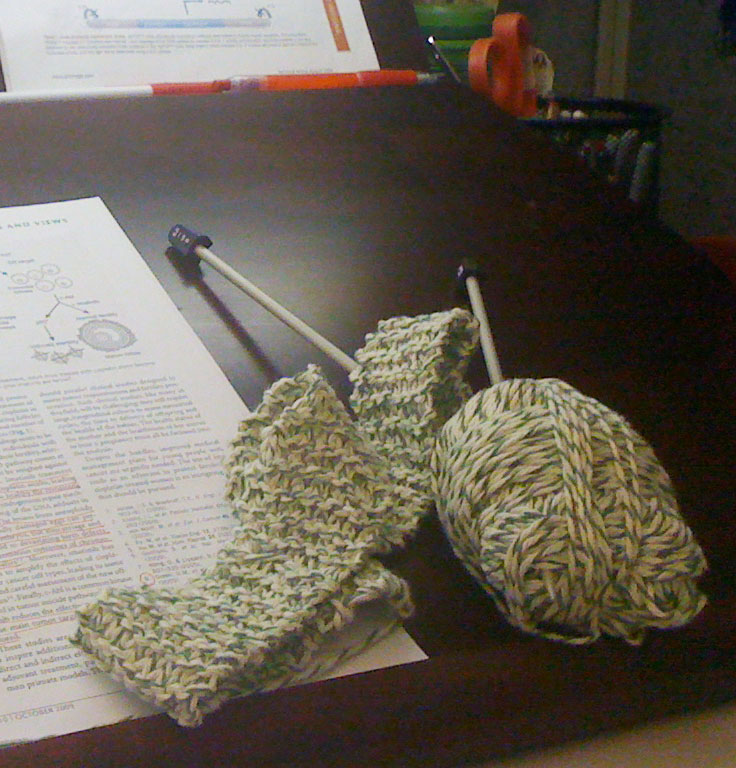
Updated 5/14/2020
For a while now I have made a living knitting words, stringing them together with a rhythm and flow to create a finished piece that has some kind of meaning. Recently I started learning how to knit yarn together with a rhythm (ideally) that will bring the loops and knots together into some kind of finished whole that has meaning: a scarf, a hat, a dish rag. And just like the clacking of knitting needles can relax and de-stress you, the clicking of the keyboard when your writing is in rhythm can be a joyful experience.
The rhythm and flow of language is important in all types of writing, including scientific writing. If your language has a consistent rhythm and flow, chances are your reader will be more likely to understand it on a first read.
Admittedly some writers seem to have an innate sense of rhythm and flow, and the words that they type simply work really well together. Other writers must work a little harder. All writers, though, can improve the rhythm and flow of their writing.
Tip 1: Read Aloud
The easiest trick I know for improving the rhythm and flow is to read aloud. If you stumble over a sentence, stop. What caused you to stumble? If you can fix a sentence so that you do not stumble over it when you read it aloud, you have improved its flow.
Reading aloud will allow you to listen for things like lack of parallel construction (with good parallel construction, items of equal importance are expressed in equivalent grammatical constructs), poor word choice, too often repeated words, incomplete thoughts and sentences, and lengthy sentences that do not allow you time to breathe (much less think) as you are reading.
Tip 2: Read Aloud to Another Person
One of the best tricks is reading the piece aloud while another person reads a printed copy. Some people, like me, cannot read exactly what is on the written page even when threatened with dire consequences: we edit as we read. If you are reading aloud and substituting words or making minor phrasing changes as you read, your listener can keep track of those changes for you on the printed copy. Quite often those minor word and phrase changes can be incorporated, and they will dramatically improve the rhythm and flow of your writing. (Side Note: This partnership method is an incredibly effective way of proofreading your work as well.)
Tip 3: Create a Boundary of Space
Another trick to writing with rhythm and flow is to make sure that when you write, you are away from distractions, interruptions and constant starts and stops. Sometimes the open-office environment makes writing without distraction difficult. If you can, find a place to hideout when you are writing. This is what John Cleese refers to as creating a boundary of space.
Over the long term, the more you practice writing and the more you read well-written writing, the more your writing will improve.
Related Posts
Michele Arduengo
Latest posts by Michele Arduengo (see all)
- An Unexpected Role for RNA Methylation in Mitosis Leads to New Understanding of Neurodevelopmental Disorders - March 27, 2025
- Unlocking the Secrets of ADP-Ribosylation with Arg-C Ultra Protease, a Key Enzyme for Studying Ester-Linked Protein Modifications - November 13, 2024
- Exploring the Respiratory Virus Landscape: Pre-Pandemic Data and Pandemic Preparedness - October 29, 2024
